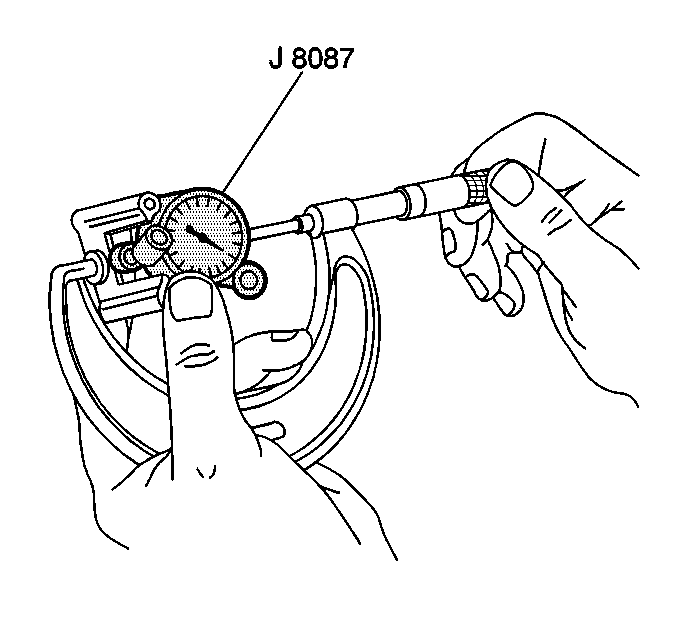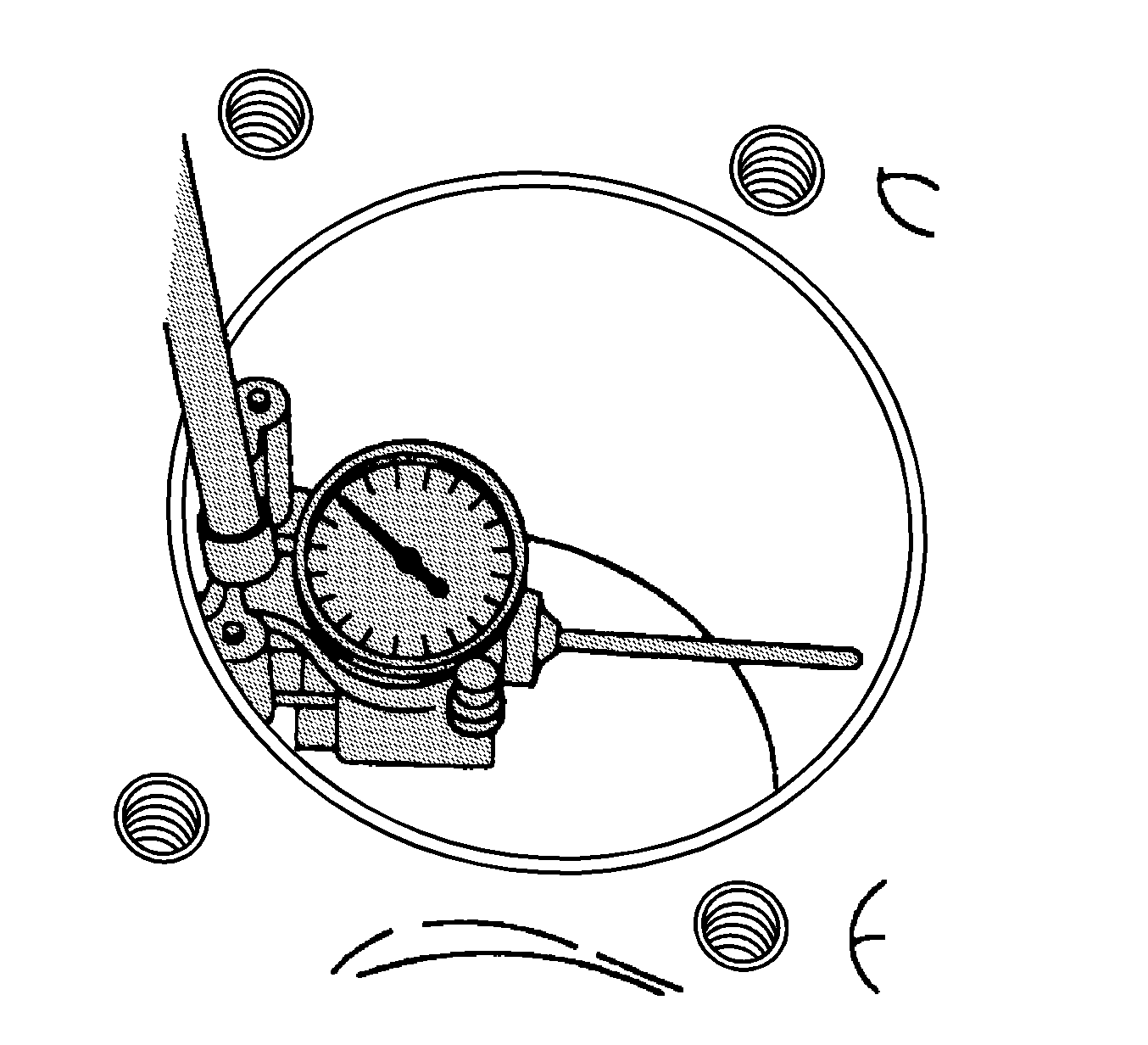Tools Required
J 8087 Cylinder Bore Checking
Gauge
- Clean the following areas:
| | Notice: Do not use a caustic solution to clean the aluminum engine block.
|
| | Important: When cleaning an engine block in a thermal type oven, do not exceed
232°C (450°F).
|
| • | The engine block in the solvent, remove all sludge, dirt, or debris. |
| | Caution: Wear safety glasses in order to avoid eye damage.
|
| • | Dry the block with compressed air. |
| • | The engine block cylinder head bolt holes for threadlocking material |
| • | Thread repair driver tool J 42385-107 may be used
to clean the threads of old threadlocking material. |
- Inspect the following areas:
| • | The cylinder walls for excessive scratches, gouging, or ring ridge |
| • | The coolant jacket for cracks |
| • | The valve lifter bores for excessive scoring or wear |
| • | The crankshaft bearing webs for cracks |
| • | The gasket sealing surfaces for excessive scratches or gouging |
| • | The oil galleries for restrictions |
| • | All threaded bolt holes for damage |
- Measure the following areas:
| • | The cylinder bores for taper |
| • | The cylinder bores for excessive ring ridge at the top of the
cylinder |
Measuring the Cylinder for Taper, Out-of-Round, and Oversize

- Adjust the micrometer to 99.0 mm
(3.897 in).

- Insert the bore gauge into the micrometer
and zero the bore gauge dial.
- Use a bore gauge and measure the cylinder bore for taper, out-of-round,
and oversize.
Slide the bore gauge up and down throughout the
length of the cylinder bore. Check the bore both parallel and perpendicular
to the centerline of the crankshaft.
A cylinder bore that
measures 99.0-99.018 mm (3.897-3.898 in) may be
honed and serviced with a standard size piston.
A cylinder bore
that exceeds the maximum diameter must be serviced with an oversized piston.


